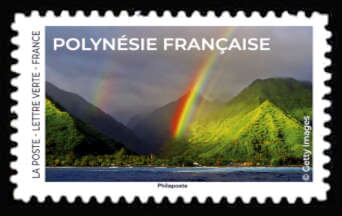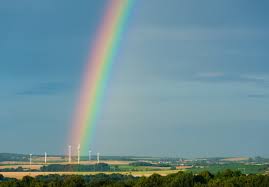Stamp: Rainbow, French Polynesia (France 2023)
Rainbow, French Polynesia (France 2023)
09 January (France ) within release Rainbows Around the World (2023) goes into circulation Stamp Rainbow, French Polynesia face value Lettre No Face Value
| Stamp Rainbow, French Polynesia in catalogues | |
|---|---|
| Colnect codes: | Col: FR 2023.01.09-01g |
Stamp is horizontal format.
Stamp from booklet. Face value € 1.16 on day of issueAlso in the issue Rainbows Around the World (2023):
- Stamp - Rainbow, Canada face value Lettre;
- Stamp - Rainbow, Denmark face value Lettre;
- Stamp - Rainbow, England face value Lettre;
- Stamp - Rainbow, France face value Lettre;
- Stamp - Rainbow, French Polynesia face value Lettre;
- Stamp - Rainbow, Germany face value Lettre;
- Stamp - Rainbow, Iceland face value Lettre;
- Stamp - Rainbow, Italy face value Lettre;
- Stamp - Rainbow, Poland face value Lettre;
- Stamp - Rainbow, South Africa face value Lettre;
- Stamp - Rainbow, Thailand face value Lettre;
- Stamp - Rainbow, Zimbabwe face value Lettre;
- Booklet - Rainbows Around the World face value 12*Verte;
Stamp Rainbow, French Polynesia it reflects the thematic directions:
A landscape is the visible features of an area of land, its landforms and how they integrate with natural or man-made features. A landscape includes the physical elements of geophysically defined landforms such as (ice-capped) mountains, hills, water bodies such as rivers, lakes, ponds and the sea, living elements of land cover including indigenous vegetation, human elements including different forms of land use, buildings and structures, and transitory elements such as lighting and weather conditions. Combining both their physical origins and the cultural overlay of human presence, often created over millennia, landscapes reflect a living synthesis of people and place that is vital to local and national identity. The character of a landscape helps define the self-image of the people who inhabit it and a sense of place that differentiates one region from other regions. It is the dynamic backdrop to people’s lives. Landscape can be as varied as farmland, a landscape park, or wilderness. The earth has a vast range of landscapes, including the icy landscapes of polar regions, mountainous landscapes, vast arid desert landscapes, islands and coastal landscapes, densely forested or wooded landscapes including past boreal forests and tropical rainforests, and agricultural landscapes of temperate and tropical regions.
A rainbow is an optical phenomenon caused by refraction, internal reflection and dispersion of light in water droplets resulting in a continuous spectrum of light appearing in the sky. The rainbow takes the form of a multicoloured circular arc. Rainbows caused by sunlight always appear in the section of sky directly opposite the Sun. Rainbows can be caused by many forms of airborne water. These include not only rain, but also mist, spray, and airborne dew.


